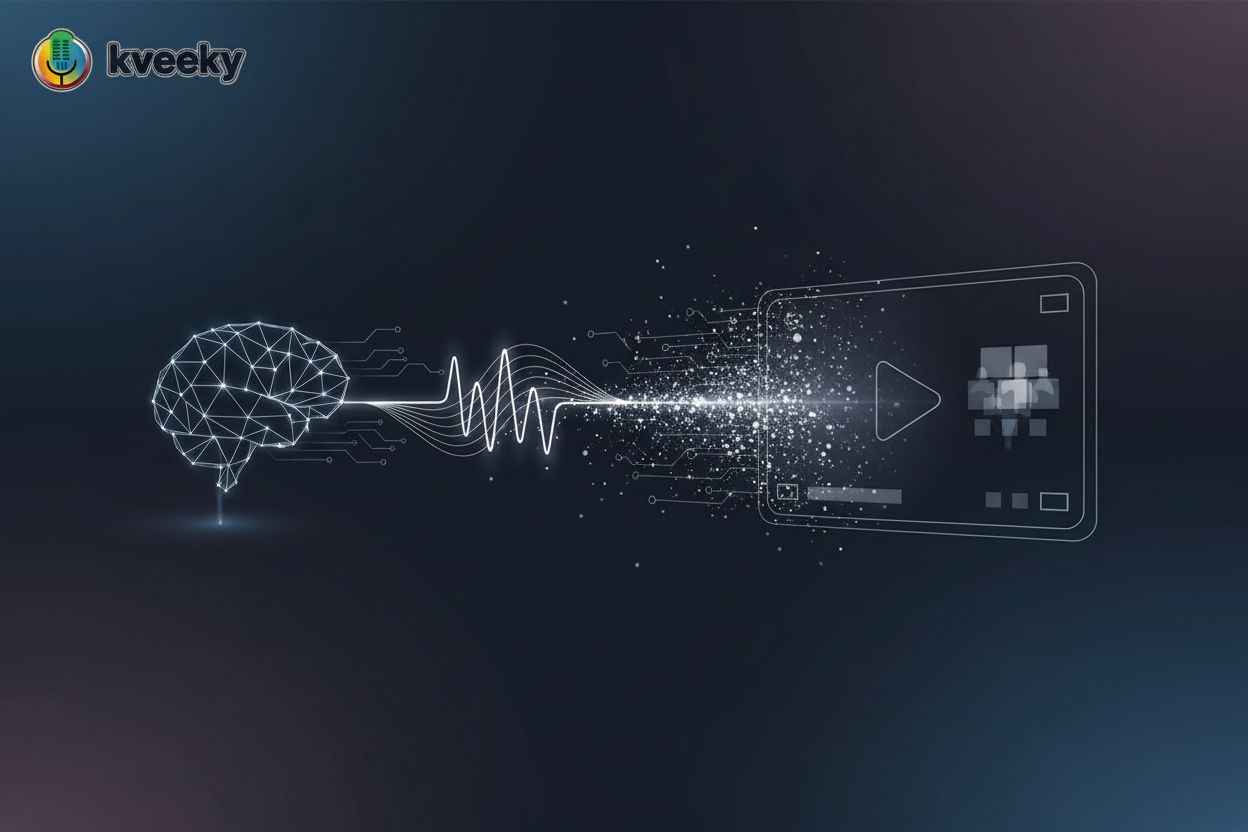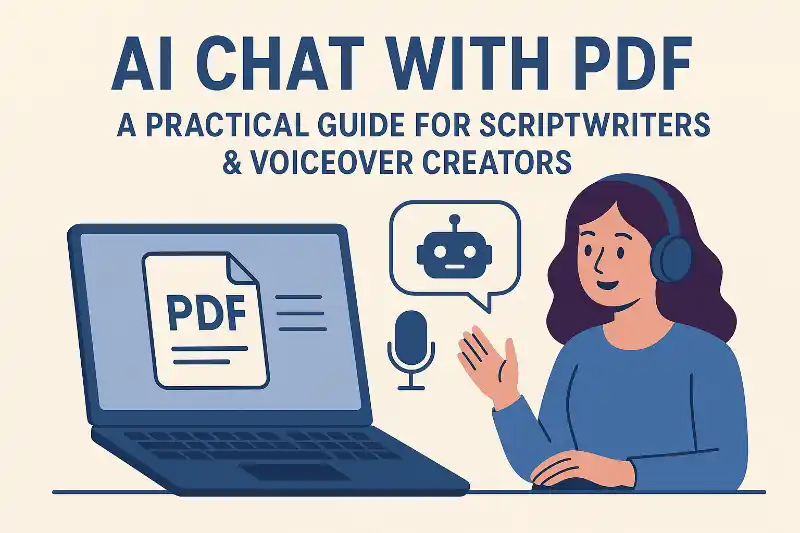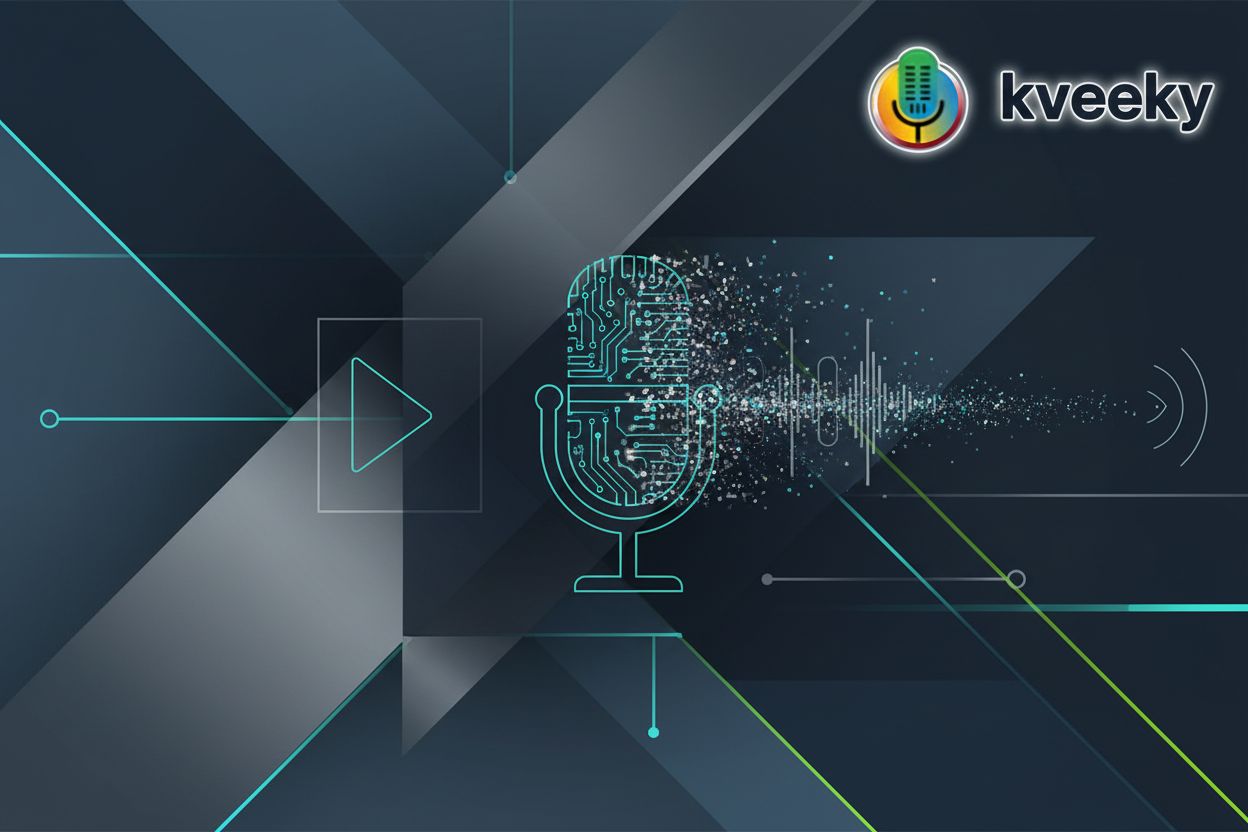Mastering Voice Style Transfer: A Guide for Video Producers
Introduction to Voice Style Transfer
Imagine creating a video with a voiceover that perfectly matches your brand's unique style, without the cost of hiring specialized voice actors. Voice style transfer makes this a reality.
Voice style transfer is the process of modifying a voice to adopt stylistic elements from another voice. Think of it as transferring the emotion, accent, or speaking style of a source voice onto a target voice. This goes beyond simple text-to-speech, which focuses on clear pronunciation and articulation. Voice style transfer adds a layer of expressiveness and personality.
- The primary goal is to replicate the nuances of a particular speaking style. For example, you could transfer the energetic tone of a sports commentator to an ai voice used in a fitness app. This can create a more engaging and motivating experience for users.
- It differs significantly from standard text-to-speech (TTS) by focusing on how something is said, rather than just what is said. TTS systems generate speech from text, whereas voice style transfer modifies existing or generated speech to match a specific style.
- In the healthcare industry, voice style transfer could enable ai assistants to communicate with empathy and understanding. For example, an ai could adopt a calm and reassuring tone when providing instructions to patients.
Voice style transfer offers many benefits for video producers looking to enhance their content.
- It allows for the creation of unique and branded voiceovers that reflect a specific identity. This helps in establishing a consistent brand image across all video projects.
- Stylistic nuances can significantly enhance audience engagement. A voice that is energetic, soothing, or humorous can capture and retain viewers' attention more effectively.
- Voice style transfer provides a cost-effective alternative to hiring professional voice actors for specialized styles. This is particularly useful for projects with limited budgets.
- Consistency is key in branding, and voice style transfer helps in maintaining a uniform voice across different video projects. This ensures brand recognition and coherence.
- Ai-generated voiceovers can often sound robotic, but voice style transfer can add emotional depth and personality, making them more relatable and engaging.
Voice style transfer empowers video producers to create more engaging and personalized content. Now, let's dive into the technical aspects of how this technology works.
Core Methods of Voice Style Transfer
Did you know that voice style transfer relies on several fascinating methods to capture and replicate the nuances of human speech? Let's explore some core techniques used in this transformative technology.
Traditional acoustic modeling techniques, like Hidden Markov Models (HMMs) and Deep Neural Networks (DNNs), form the foundation of many voice synthesis systems. These models analyze and represent the statistical relationships between speech sounds (phonemes) and their acoustic properties. By extracting features like pitch, timbre, and energy, these models can synthesize speech by stringing together these acoustic units. For voice style transfer, acoustic models can be adapted to modify these features. Imagine adjusting the pitch range to mimic a specific speaker's intonation or altering the timbre to match their unique vocal quality. However, these traditional methods often struggle to capture the full complexity of human speech, sometimes resulting in less natural-sounding results.
Deep learning has revolutionized voice style transfer. Models like Variational Autoencoders (VAEs) and Generative Adversarial Networks (GANs) can learn intricate stylistic features from vast amounts of data. VAEs work by encoding speech into a lower-dimensional latent space, which allows for manipulation of stylistic attributes. GANs, on the other hand, use a generator network to create style-transferred speech and a discriminator network to evaluate its authenticity. For style transfer, the encoder in a VAE would take speech and learn to represent its content and style separately in the latent space, allowing the decoder to reconstruct speech with a different style. In GANs, the generator takes content information and a style vector as input to produce synthesized speech, and the discriminator tries to distinguish between real speech and synthesized speech, also assessing if the style is appropriate.
These models excel at capturing subtle nuances and generating more natural and expressive speech compared to traditional methods. For instance, a GAN could learn to transfer the emotional tone from a dramatic reading to a neutral news report, adding depth and engagement.
Prosody, encompassing intonation, rhythm, and stress, plays a vital role in conveying emotion and meaning in speech. Prosody transfer techniques focus on extracting and manipulating these features to alter the perceived style and emotion of a voice. These prosodic features are typically identified by analyzing pitch contours, speech rate, and energy levels in the source audio. For example, you might transfer the rhythmic patterns of a fast-talking announcer to a slower, more deliberate speaker by adjusting the speaking rate and pauses. Methods for manipulating prosody include adjusting pitch contours, modifying speaking rate, and altering the emphasis on certain words. By carefully controlling these elements, you can significantly impact the perceived style and emotional tone of the voice. This is particularly useful in e-learning applications, where adjusting prosody can enhance engagement and comprehension.
As technology advances, ethical considerations become increasingly important. The potential for misuse, such as creating deceptive content or impersonating individuals, is a significant concern. Ensuring transparency and obtaining consent are crucial steps in responsible voice style transfer.
Practical Applications in Video Production
Did you know voice style transfer can revolutionize video production, allowing you to create engaging content with consistent branding? Let's explore how this technology can be applied in practical scenarios.
Voice style transfer offers a powerful way to generate unique voices for animated characters. You can modify a base voice to match the character's personality and appearance. This eliminates the need to hire multiple voice actors, reducing production costs.
Imagine a cartoon featuring a wise old owl and a mischievous young fox. Voice style transfer could be used to give the owl a deep, resonant voice and the fox a high-pitched, energetic tone. This helps to immediately differentiate characters and enhance the storytelling experience.
Specific style transfers could include making a voice sound more energetic for a lively character, humorous for a comedic role, or serious for a dramatic part. For instance, to achieve an energetic style, techniques might involve increasing pitch variation and speaking rate. For a humorous style, subtle pitch shifts and exaggerated intonation could be employed. A serious tone might be achieved by lowering pitch and slowing down the speaking rate. The possibilities are endless, allowing video producers to craft memorable and distinct characters.
E-learning modules can greatly benefit from voice style transfer. You can adapt voice styles to suit different learning topics. For example, a more enthusiastic voice can be used for introductory material, while a calmer voice is better for complex subjects.
Using voice style transfer ensures a consistent brand voice across all e-learning materials. This reinforces brand recognition and creates a cohesive learning experience. Stylistic variation can also improve learner engagement and comprehension.
Consider a series of online courses teaching financial literacy. The introductory modules could feature an upbeat and encouraging voice, while the advanced modules on investment strategies might use a more authoritative and serious tone.
Marketing and advertising campaigns can leverage voice style transfer to create voiceovers that align with brand identity and target audience. Experimenting with different voice styles helps find the most effective approach for resonating with potential customers. Personalizing voiceovers can resonate with specific demographics. For example, a brand targeting younger audiences might use a voice with a more contemporary cadence and slightly higher pitch, while a brand aiming for an older demographic might opt for a deeper, more measured tone.
Voice style transfer can create memorable and impactful audio ads. For instance, a luxury brand might use a sophisticated and refined voice, while a sports drink company could opt for an energetic and motivational tone.
Exploring these practical applications reveals the transformative potential of voice style transfer in video production. Now, let's look at the data requirements and training processes involved.
Tools and Resources for Voice Style Transfer
Ready to add some powerful tools to your voice style transfer toolkit? Let's explore some resources to help video producers like you create stunning audio content.
Kveeky offers an ai-powered platform that simplifies the creation of voiceovers. This tool can transform scripts into lifelike voiceovers with ease. Kveeky also provides ai scriptwriting services, which can be invaluable for video producers seeking to streamline their content creation process.
- Kveeky provides voiceover services in multiple languages. This is particularly useful for reaching a global audience with localized content.
- The platform features customizable voice options. You can fine-tune the voice to match your specific needs. It also features a user-friendly interface for script and voice selection.
- Interested in trying it out? Kveeky offers a free trial with no credit card required.
For developers who want to build custom voice style transfer systems, open-source libraries and apis provide a wealth of resources. These tools offer flexibility and control over the entire process.
- PyTorch and TensorFlow are popular deep learning frameworks that support voice style transfer research and development. These libraries provide the building blocks for creating and training custom models.
- Several open-source projects offer pre-trained models and code examples for voice style transfer. Some notable examples include:
- Tacotron 2: A widely used end-to-end text-to-speech synthesis model that can be adapted for style transfer.
- WaveGlow: A flow-based generative model for audio synthesis, often used in conjunction with TTS models.
- FastSpeech 2: An efficient non-autoregressive TTS model that allows for better control over prosody.
- VITS (Variational Inference with adversarial learning for end-to-end Text-to-Speech): A more recent model that combines VAEs and GANs for high-quality speech synthesis and style transfer.
- Choosing the right tools depends on your project requirements, technical expertise, and desired level of customization. Consider factors like ease of use, performance, and community support.
Choosing the right tools can significantly improve your voice style transfer workflow. Let's now discuss some of the challenges and limitations you might encounter.
Challenges and Limitations
While voice style transfer offers exciting possibilities, it's important to recognize its current challenges and limitations. Overcoming these hurdles is key to unlocking the full potential of this technology.
Effective voice style transfer relies on high-quality training data. The system needs a large dataset of speech samples from both the source and target voices to accurately learn and replicate the desired stylistic elements.
- Acquiring sufficient data can be challenging, especially for specific styles, accents, or languages. Rare or unique voice styles may not have readily available datasets, making it difficult to train a robust model.
- One way to address data limitations is through data augmentation techniques. These methods artificially increase the size of the dataset by applying transformations such as adding noise, time-stretching, or pitch-shifting. For voice style transfer, this could involve subtly altering pitch or speed of existing recordings to create variations. Another approach involves using speech synthesis to generate additional training data. For instance, a TTS system could generate neutral speech that is then used as a base for style transfer, or even generate speech in a target style if a good model already exists. However, this may introduce artifacts if not done carefully, such as unnatural pauses or robotic intonation.
A significant challenge in voice style transfer is preserving the naturalness and intelligibility of the speech. Simply transferring stylistic elements without considering the underlying speech quality can result in distorted or unnatural-sounding results.
- Techniques for preserving speech quality while modifying style include using sophisticated acoustic models and deep learning architectures that can disentangle style from content. This allows the system to modify the style without significantly affecting the clarity and naturalness of the speech.
- There is often a trade-off between style transfer strength and speech quality. Pushing the system to transfer a very strong style may compromise the naturalness of the speech. For example, a "strong" transfer might result in exaggerated pitch variations and a very fast speaking rate that sounds unnatural and hard to follow. Conversely, prioritizing naturalness may result in a weaker style transfer effect, where the transferred style is barely perceptible. A "weaker" transfer might sound very natural but lack the distinctiveness of the target style. Finding the right balance requires careful tuning and evaluation.
As with any powerful technology, voice style transfer raises important ethical considerations. The ability to manipulate voices can be misused for malicious purposes, such as creating deepfakes or impersonating individuals without their consent. The primary concern here is the potential for deception and the erosion of trust.
- Transparency and consent are crucial when using someone's voice for style transfer. It is essential to obtain explicit permission from the individual and to clearly disclose that the voice has been modified.
- Guidelines for responsible use of voice style transfer in video production should include measures to prevent misuse and protect individuals' rights. This may involve implementing safeguards to detect and prevent the creation of deceptive content.
Addressing these challenges and limitations is essential for realizing the full potential of voice style transfer in video production.
Next, we'll explore the future trends and emerging research directions in voice style transfer.
Future Trends in Voice Style Transfer
The future of voice style transfer is rapidly evolving, promising even more personalized and realistic audio experiences. Let's explore some of the exciting trends on the horizon.
One of the most compelling future trends is the ability to clone and transfer your own voice style. This technology would allow you to create a digital version of your voice, capturing its unique characteristics and nuances.
- This has applications in personalized video content. Imagine creating videos with your voice, even if you don't have the time or resources to record them yourself.
- Voice cloning can significantly improve accessibility. People who have lost their voice due to illness could use a cloned version to communicate.
- Voice cloning raises ethical considerations. Issues related to voice ownership, consent, and potential misuse need careful consideration.
Another exciting development is the potential for real-time voice style transfer. This would allow you to modify your voice in real time, opening up new possibilities for live video production and interactive applications.
- Real-time voice style transfer faces technical challenges. Processing audio quickly enough to maintain a natural conversation flow is difficult due to the computational complexity involved in analyzing and synthesizing speech on the fly, leading to latency issues.
- Advancements in edge computing and optimized algorithms are helping to overcome these challenges. These improvements will enable faster and more efficient real-time processing.
- Gaming and virtual reality could greatly benefit from this. Players could customize their character's voice in real time, enhancing immersion and personalization.
Transferring voice styles across different languages presents a fascinating area of research. Imagine hearing a voice with the expressiveness of a French speaker, but speaking fluently in English.
- Multilingual voice style transfer faces linguistic and cultural differences. The nuances of speech vary significantly across languages, requiring sophisticated models to capture and replicate them accurately. For example, the way emphasis is placed on words in English differs greatly from languages like Mandarin, where tonal variations carry significant meaning. Capturing these subtle differences is a major hurdle.
- Creating global video content with localized voiceovers becomes easier. This technology could help maintain brand consistency while adapting to different cultural contexts.
- For example, a marketing video could feature a voice that retains its original emotional tone while speaking in multiple languages, creating a more engaging and relatable experience for diverse audiences.
As voice style transfer continues to advance, it will unlock even more creative possibilities for video producers. Let's wrap up with a look at the key takeaways and future implications of this exciting technology.
Conclusion
Voice style transfer is more than just a trend; it's a game-changer for video producers. Are you ready to revolutionize your video production process?
Voice style transfer offers numerous advantages:
- It unlocks creativity by allowing you to craft unique, branded voiceovers that resonate with your target audience. Imagine tailoring the voice to match the specific emotions and tone of each video.
- It enhances efficiency by reducing the time and resources spent on finding and hiring voice actors. This is particularly useful for projects with tight deadlines.
- It provides cost savings by offering a cost-effective alternative to traditional voiceover methods. This allows you to allocate resources to other critical areas of video production.
The world of voiceovers is evolving, and ai is leading the charge. Ai is leading this charge by enabling capabilities like sophisticated voice style transfer, personalized voice generation, and real-time audio manipulation, which were previously impossible or prohibitively expensive.
- Experiment with voice style transfer to discover new ways to engage your audience and enhance your brand identity. The possibilities are endless!
- Stay informed about the latest advancements in ai voice technology to leverage its full potential. Continuous learning is key to staying ahead in this rapidly evolving field.
- Embrace the future where voiceovers are more personalized, dynamic, and accessible than ever before. Voice style transfer is set to redefine video production.
As ai voice technology continues to evolve, video producers can look forward to even more innovative tools and techniques.





